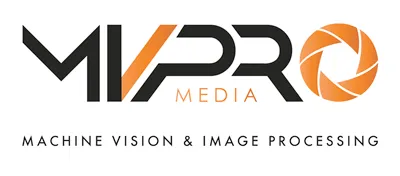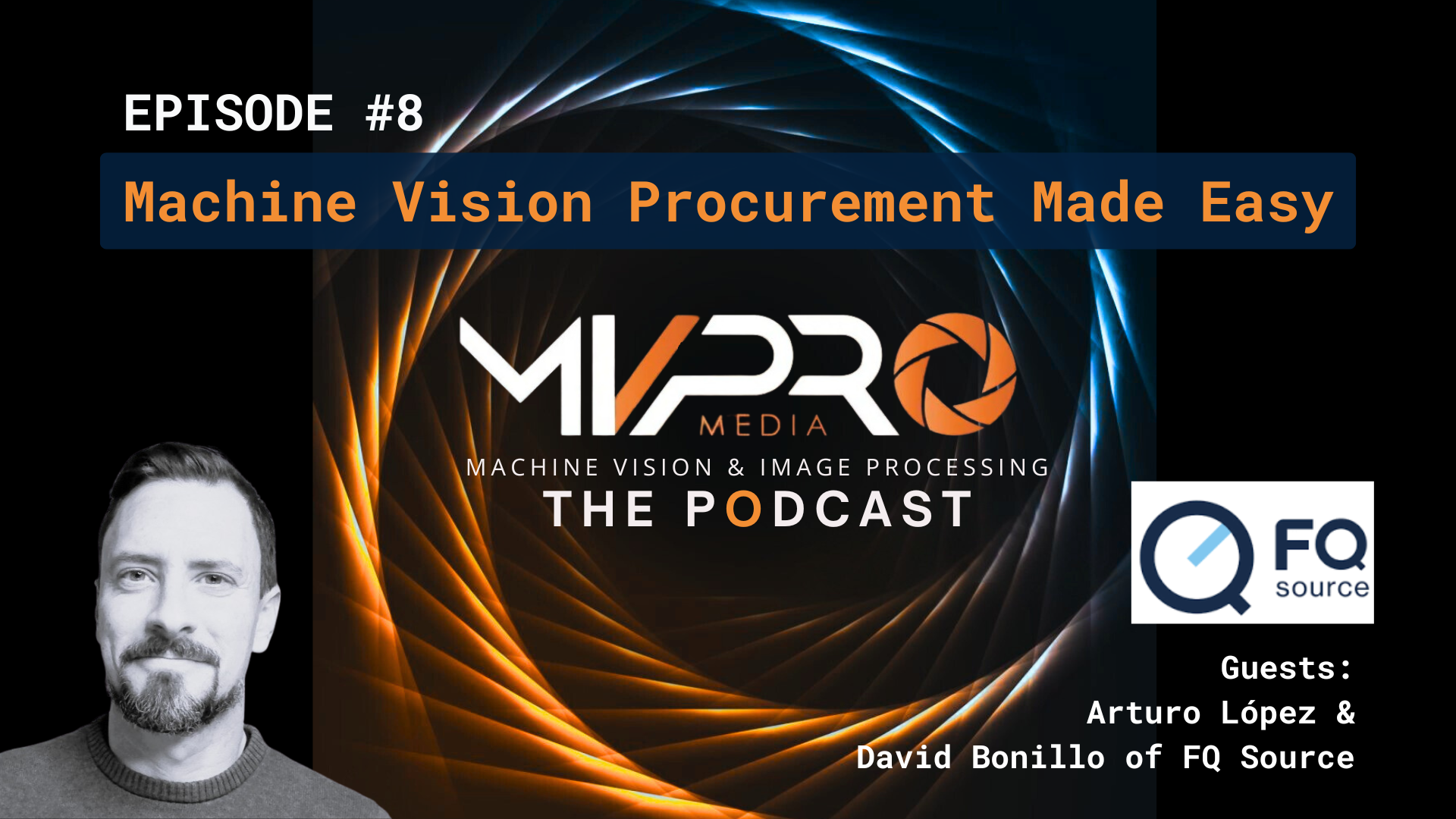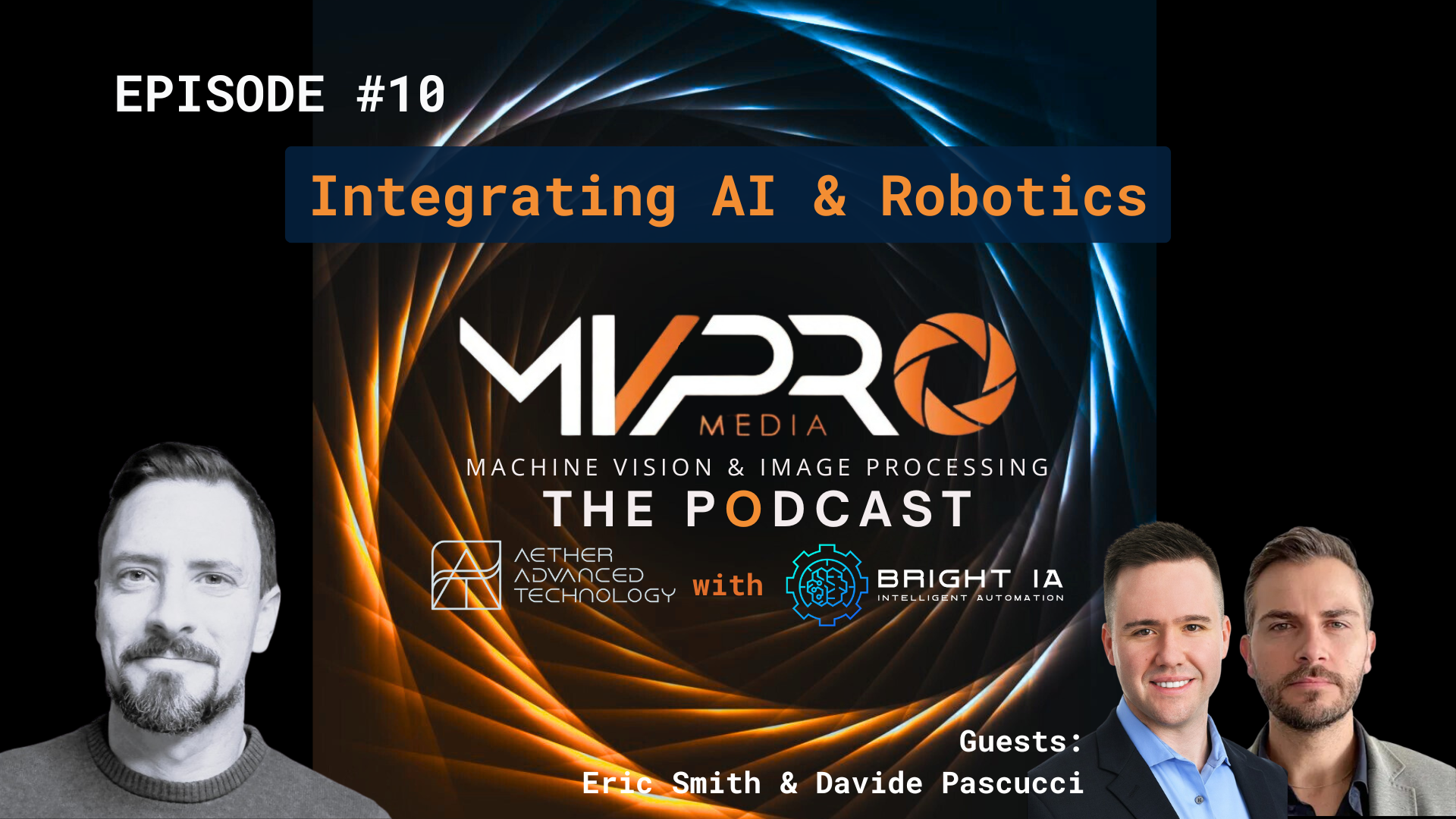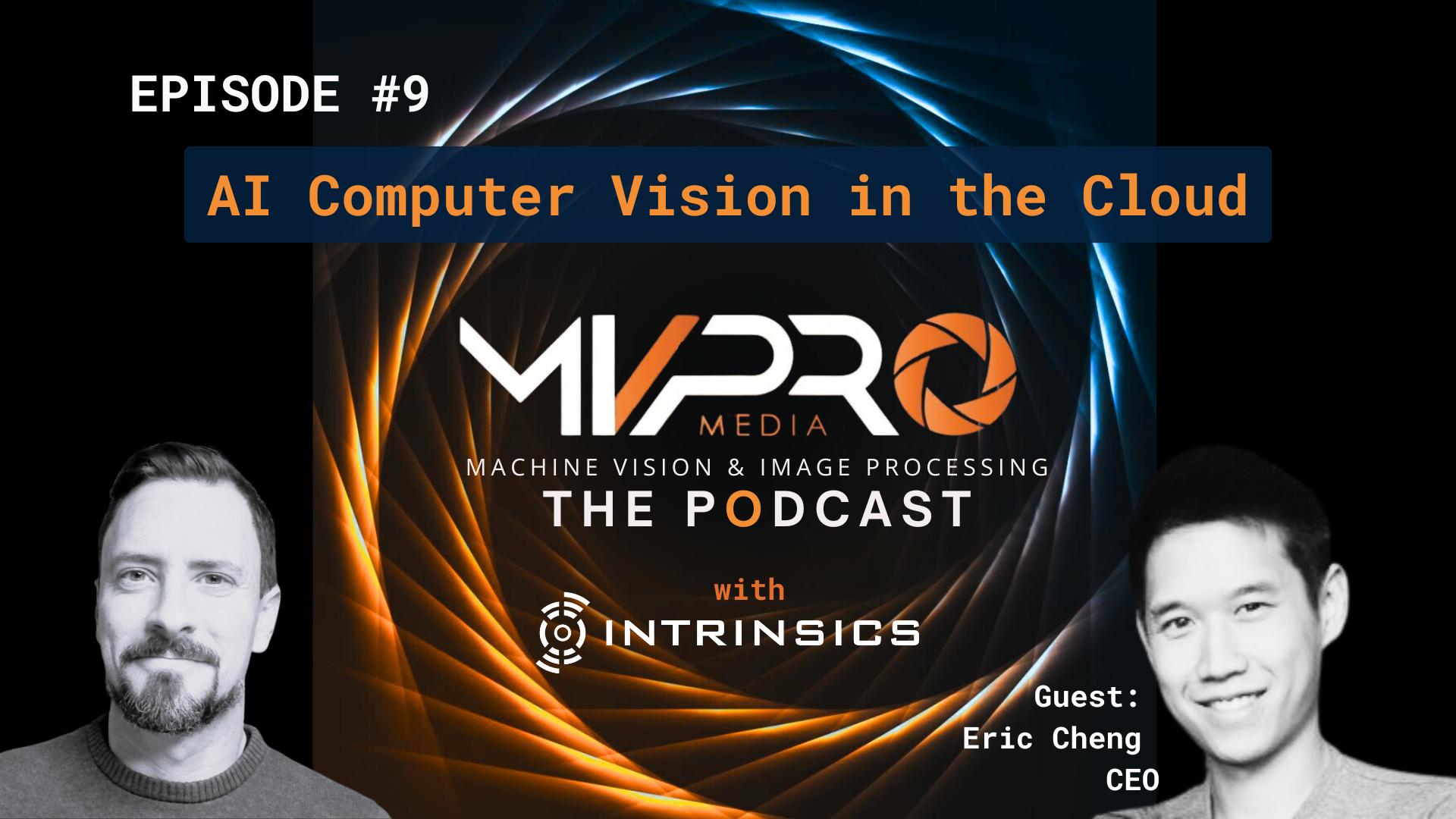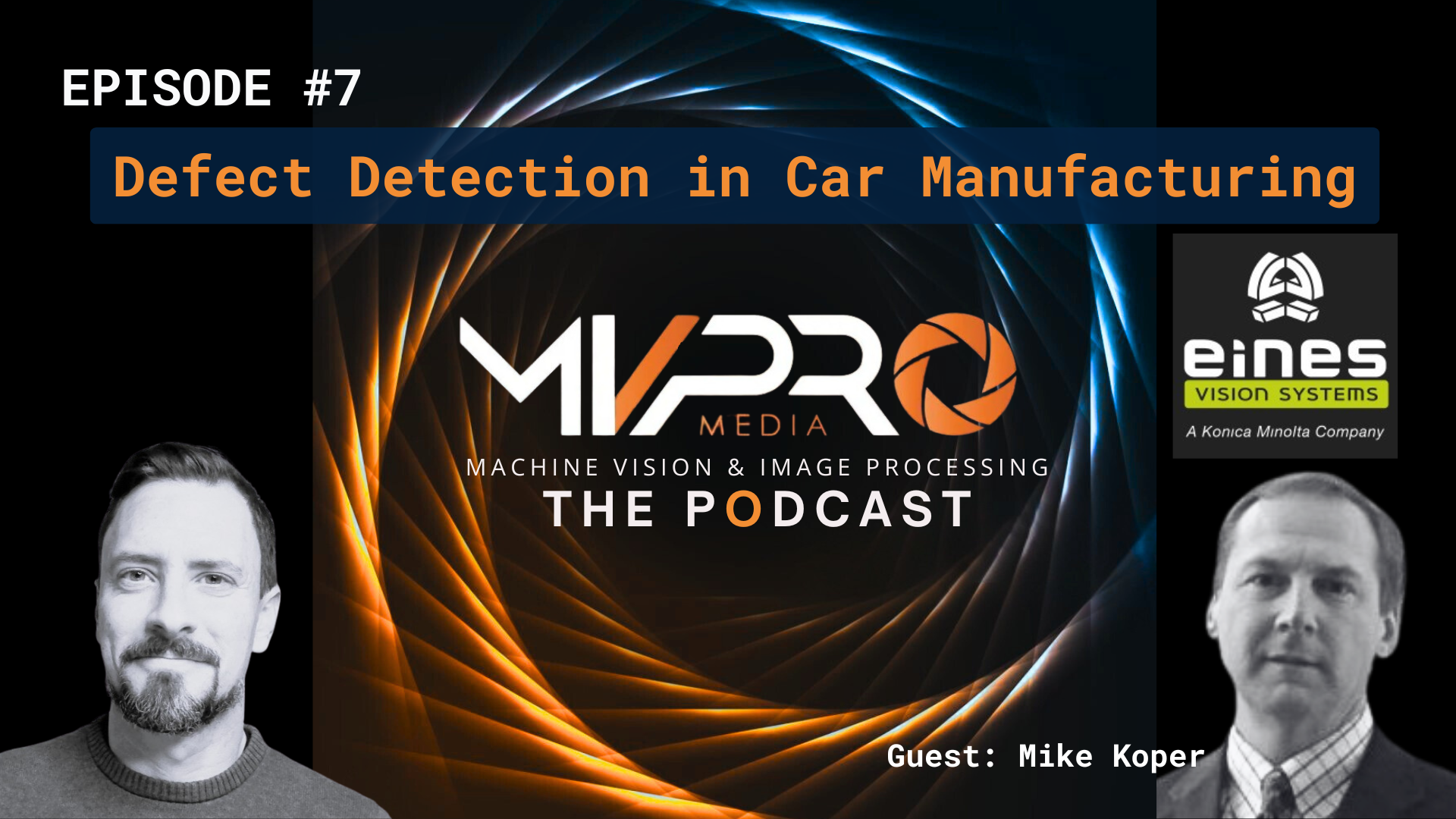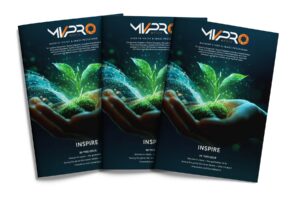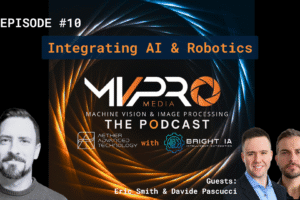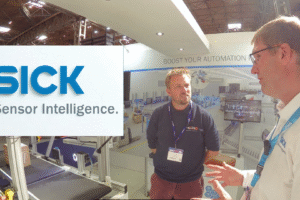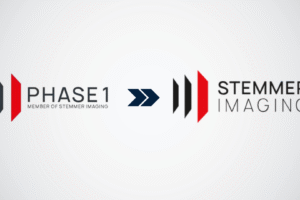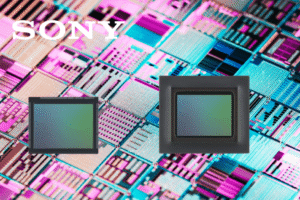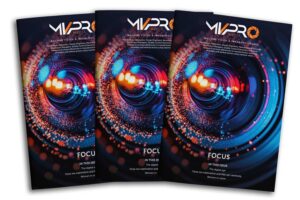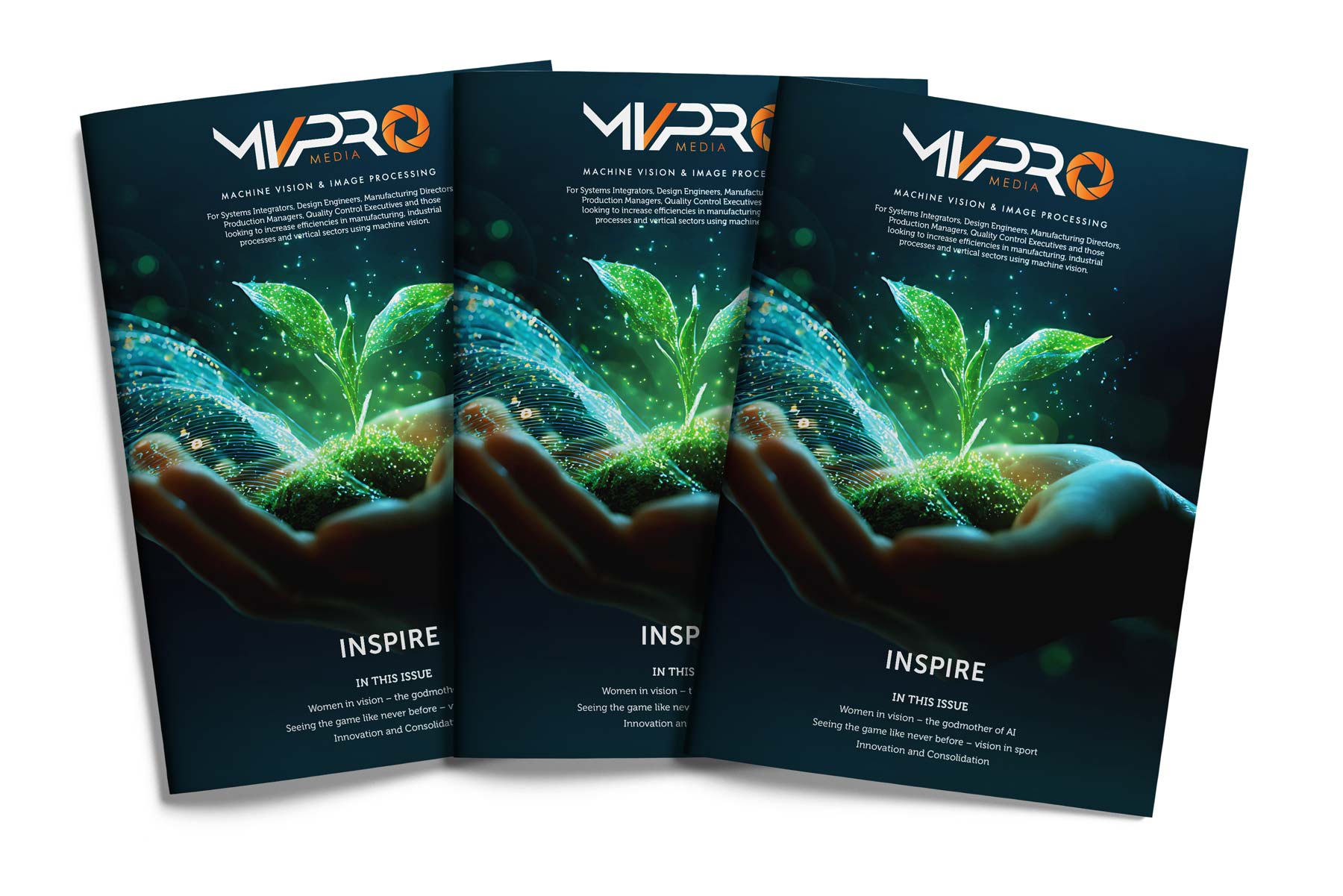In the latest episode of the MV Pro Podcast Josh speaks with the team at FQ Source.
Listen how Arturo López and David Bonillo of FQ Source talk about their pioneering, AI-driven platform designed to drastically cut supplier discovery time. Josh discusses their vision for the platform, the opportunity for enhancing supplier discovery in the age of AI, and how their background in system integration informed their approach.
Quickly discover & access sections of the transcript by clicking the arrow:
- Introduction & Founders Backgrounds
- The Origin of FQ Source & The Challenges of Supplier Discovery in Machine Vision
- How FQ Source Uses AI to Solve Discovery Problems
- The Role of Context Awareness & Verification in FQ Source’s Supplier Discovery
- Best Practices for Using FQ Source: Crafting the Right Query
- Explaining the Match Justification Feature
- Granularity of Supplier Comparison and Evaluation
- The Supplier Side: Reasons for Joining FQ Source
- FQ Source’s Supplier Database and Global Expansion Plan
- Supplier: How to Join and Edit Your Profile
- Beta Phase and Future Developments
- How to Get in Touch
Episode Transcript:
[00:00:00.000] – Arturo López (FQ Source)
“You can go through a conversation with the agent, save your selected suppliers on the specific query into our RFQ project. You can send directly an invitation to these suppliers that you have selected to engage with you.”
1. Introduction & Founders Backgrounds
[00:00:17.360] – Josh Eastburn (host)
Hello and welcome to the MVPro podcast. Today’s episode is a bit of a departure from recent topics we’ve covered, although no less technical. We’re talking about procurement and supplier discovery and how one company, FQ Source, is trying to crack this problem for the machine vision industry. FQ Source is building an AI agent that converts a natural language specification into a verified supplier shortlist and one-click RFQ. The platform fuses LLM chat, semantic vector search, and an agentic workflow to cut discovery time by 90%, providing buyers with a shared workspace for supplier discovery and giving specialist suppliers verified exposure with zero SEO spend required. Buyers use it for free. Suppliers claim their company’s profile through a subscription to the platform. Arturo López is CEO of FQ Source. Before launching FQ Source in 2025, he worked for seven years as business development director and CEO of ISR, a Spanish machine vision integrator, where together with David Bonillo, now CTO at FQ Source, he scaled revenue to 2. 7 million by delivering automated inspection solutions to global manufacturers. He is an industrial engineer and MBA with an international background and experience in the industry related to automation of industrial processes, especially artificial vision and AI. With that, let’s dive in.
2. The Origin of FQ Source & The Challenges of Supplier Discovery in Machine Vision
[00:01:40.520] – Josh
Thank you for being on the show, Arturo. Who really needs this right now? Why do you think they really need it?
[00:01:48.980] – Arturo López
Industrial buyers, particularly in the procurement and engineering roles, they normally source complex technologies such as machine vision, and they face long lead times where it’s a lot of scattered information, a lot of supplier websites they have to go in. There’s a lack of trust to identify properly qualified suppliers. For industrial buyers who are mainly engineers, FQ is for them.
[00:02:18.400] – Josh
You both spent a lot of time before starting FQ Source running a system integration company. Is that right?
[00:02:26.720] – Arturo López
Yes, we was. David and I were in the company for seven years. I was the CEO of the company for the last three years, and David was CTO. Together, we also run the development department. We made sales in a much more efficient ecosystem in Europe, mainly, but also in the US. We faced a big challenge making sales to big tier ones. We discovered that we had this problem of getting in front of the best customers because our services and products were not easy to find for our customers.
[00:03:03.240] – David Bonillo
It was like we have been there for these seven years and we have realized that the technology from ISR is quite good for inspecting transparent surfaces. We have realized that many companies wanted this technology, but the problem was that they did not know that this technology was available. It was a difficult both for ISR and for the tier one, tier two OEMs to get to know ISR. This is why during many of the business trips that we have made together, we discussed about this topic. We reached to this solution that right now we are developing together.
3. How FQ Source Uses AI to Solve Discovery Problems
[00:03:46.260] – Josh
You’ve mentioned the use of AI as an important part of the product that you’re developing, right? Why is that the right approach for solving this problem? Why didn’t this product exist a decade ago? Why did it take the development of those different tools like LLMs and so on to be able to solve this problem the right way right now? Maybe that’s a question for you, David.
[00:04:11.980] – David Bonillo
In this case, I think that what is What we’re going to point here is that the AI is going to be able to reason and to decide if this specific product is good for your query, for your needs. Before, the previous approaches to this problem, they are using fixed fields, fixed categories and so on. So the machine vision industry is quite wide, is quite open. It’s not possible to just using some fields that reach the specific solution that you have. From our point of view and to get into account the trials that we have been making, it is a much better result in case that you have a database considering all the products. Then to to give this database to an agent that is going to be able to reason and to learn from the database just like a person. We are always focused on trying to replicate the behavior that a person would follow to finally give you an answer of which product is going to be good for your case. In case that you have a person that knows everything about this system is able to reason, or you have just a person that you are going to give him some specific fields, and he’s going to tell you different cases without the ability to reason.
[00:05:39.220] – David Bonillo
I’m sure that you would follow the person that has the knowledge and you can talk with him. This is the approach that we are following here.
[00:05:48.780] – Josh
Okay, interesting. I understand the process that you’re describing, of sitting down with somebody and talking through the problem space and the different constraints that you have, material requirements, and the requirements of the end user that you have to meet. I understand that that can be… It’s a nuanced process. Maybe it takes multiple attempts because you’re talking through very detailed requirements sometimes. It sounds like what you’re saying is, yeah, people have tried to do this before, but the limit… I mean, we can build databases. We’ve been building databases for a long time. Anybody can make a database of suppliers. But if your only option is to go in and do keyword search, that doesn’t get to the level of detail and understanding of the interactions of the different parts of the system that you’re trying to build. Is that the right way to say that?
4. The Role of Context Awareness & Verification in FQ Source’s Supplier Discovery
[00:06:37.360] – Arturo López
Context awareness as well. Context awareness is the matter here. The data has the ability to make their language understanding and also the context understanding. For each supplier, we have the capability, products, or services that they are doing. When a query is received by our agent, the model can understand the complex itself of the query. We will not only make the search based on keyword, but also the full context of the need as the query. Then we retrieve the information from the database, but with this context, which is calculating with a vector of values which summarize all the context and all the capabilities of the buyer. Then with the agent, we come back with the solution or with the results that best fits this context, this query, this capability. This is a dramatic search with the universe of words matching together, but in case of suppliers specialization and the need of the industrial buyer searching for these solutions. It’s quite the opposite of searching on Google where you have some keywords, then you have 10 links in the first page, and then you have to visit all of them to make sure that your results are more or less good or they are useful for you.
[00:08:02.060] – Arturo López
This is that something. It’s obvious, however, that the speed and trust is multiplied by 10 times maybe because you have directly retrieved around the database all this information in just a query, in just a prompt. This is when they find their writing this digital supplier in one prompt.
[00:08:22.260] – Josh
Especially in terms of creating context for the tool to understand the problem that I’m trying to solve, how does that work in FQ-Source?
[00:08:32.560] – Arturo López
The user in our database is the supplier. Then we have also users which are the suppliers. In the case of the suppliers, we let them edit and add information about products and services, which will be cited by our model in case the capability match the buyer query. In this situation, we need to ensure that the information given by the supplier is certified and verified by us. The difference between ChatGPT or Perplexity or any other large language model and SQL in this case, is that our graph of data is verified and we are covering specific and virtual domains of knowledge, which is in this case, machine vision first. ChatGPT will give you results for sure, and they will be good. But we are sure that the information at SQL is verified and there’s a database which is being certified by us. We are experts in the knowledge. This is the difference. This is how we ensure that the user can add information and be cited correctly.
5. Best Practices for Using FQ Source: Crafting the Right Query
[00:09:44.380] – Josh
People understand prompt engineering now, right? Even maybe your grandma’s learning about prompt engineering. If she uses ChatGPT, she knows I get better answers if I tell it this way, if I give it more information. Is there something similar in FQ source? What does a good prompt sound like? If I’m sitting down with FQ source, what’s the right way to use that tool? What information can I put in to make sure that I’m getting good results?
[00:10:13.400] – David Bonillo
For the information that you can give to the platform as it is a reasoning LLM. You can give any information you want. Taking into account the trials that we have been making. The more information you give, the better results you are going to have because the reasoning The agent is going to be able to take into account all of this information and then to evaluate, considering the query that you have, the technical data that you have given to the platform, and then all of the information that is stored at the database, considering each product that it considers that has to evaluate. As it is a conversation, the agent is going to ask you. He’s going to ask you about the specific details. He’s going to ask you about the minimum defect size. He’s going to ask you about the description of the part. Obviously, we are right now developing the feature so that you can just upload an image of what you’re looking for and then be able to make this retrieval from just the image. But in any case, as we have said, the more information is the better result that you’re going to get.
[00:11:24.540] – Josh
Fantastic. As a user, I’m able to tell the tool, FQ Source, types and sizes, other performance specifications requirements that I have as the engineer that I’m trying to design to.
[00:11:37.520] – David Bonillo
Available cycle time in case that it is, for example, a steel production line. The context of the line, the environment and also the line speed and so on. This is the information that is going to be highly valuable so that the LLM can reason and decide whether an option is okay or not okay. In this case, it’s not ‘okay or not okay’. It’s a match percentage and then justification so that you can see why this product has this match percentage.
6. Explaining the Match Justification Feature
[00:12:09.820] – Josh
When I tried out the beta, I actually was really impressed with that feature. The concept of it is great in general for LLMs because we’re always wondering what the reasoning process is. How did the tool make this match? How do you know this is a good fit for me? How does the system decide whether a given company is a good match my project? Maybe you’ve already answered this, but yeah, explain how that match justification feature works. Maybe that’s a good way to say that.
[00:12:39.760] – David Bonillo
In this case, I’m going to make it simple, and then I’m going to let Arturo add anything that he wants to. But in this case, it is just as we have an agent, we have a tool that is able to make all of this reasoning. This tool has a specific front prompt for all of the information that the tool has. That is part of our know-how. It is the way that the system is going to reason, is going to be able to give you an answer.
[00:13:18.390] – Josh
You don’t want to add anything to that?
[00:13:24.420] – Arturo López
It’s like this, ChatGPT for a specific case, for a specific comment of knowledge.
[00:13:30.920] – David Bonillo
Yeah, absolutely. Here, just to give you a quick overview of how agent work. It have several nodes. In case that you make a general question, it’s going to call to a general node with a specific prompt so that it can give you an answer. In case that it detects that you want to look for a specific system, it’s going to go to the node that has these tools so that it has first that is going to ask you about these specific details and everything. Then once it has all of the information, it’s going to give you an answer. It’s going to call the tool and the tool is going to make all the reasoning and everything so that it can give you an answer. Then we also have another note. For example, if you want to discuss about a specific company, you can in case that you want to compare two different companies. I don’t know if I’m going to choose this This one or this one. So compare these two different companies. Different nodes with different tools, each tool and each node with a specific front so that it can behave just as it’s sold on each step of the conversation.
[00:14:45.940] – Josh
Very interesting.
7. Granularity of Supplier Comparison and Evaluation
[00:14:47.620] – Josh
How granular are you able to get with your recommendations? Or what details are you able to compare, for example, between different suppliers? When you say, let’s compare these two companies, what elements are you looking at?
[00:15:06.260] – David Bonillo
Here, on one hand, we have the information that the user has given to the agent. How granular you can go there? As granular as you want, you can give all of the information that are all of the requirements that you want to. Then we have our database that is filled with all of the information of the suppliers. There, we are going just to be able to research, taking into account the information that we have about the product at the platform. There is just a matter of right now, we have our curated database. We have all of the information that we have been able to scrape from the internet, but in some cases, some companies do not have all the information. This is the reason why I think that it’s going to be by the end of this month, we are going to give the suppliers the opportunity to claim their company and then to modify the information to add any further information that they want to add maybe a data set or whatever, any brochure that they have, any further information that they have. As we have said, the more information that we have, just as a person, the most information that the person have is going to give you better results, better reasoning, better That is more or less the philosophy that we have right now.
[00:16:34.080] – Josh
That’s very exciting. I think that really helps me understand how different that is compared to the previous generation of keyword search. I’m thinking as a supplier, I want to be able to put in, these are the products that we carry, like your line card. That’s what we would call it here anyways. These are the different brands that we represent. These are the specific products that we carry. These are the performance-specific applications, all of which would help to improve matches. I’m motivated as a supplier to give lots of information about the kinds of problems that I can solve. Maybe I’m talking about industries that we specialize in or particular types of applications that we are really good at solving. We have a portfolio of clients that we have already worked with in your vertical. On the other end, being the client, that’s what I want to know. Has this supplier solved my problem before? If you’re saying that’s the information that people can put in when you’re talking about context, then I can see how that would be a lot more helpful than just, I don’t know, smart camera, whatever people have been searching for before.
[00:17:41.440] – David Bonillo
As you have said, the supplier is going to be able to say, I have already solved this problem in the past. The LLM is going to tell you this person has solved this problem in the past. Also, we want to give the tool for the reasoning for the match percentage. We want to feed the two with more information, not just the product information, but the company information. Where the company is located, also make some reasoning in case you want just local companies or companies close to you that have a site close to you. But also we want to… In case that you want companies that the financial health is this or that, you are also looking for companies that have more experience or otherwise, you want companies do not have this experience. It can be more flexible, can be much more innovative. We want to give all of this information to the reasoning model. Right now, we give a little bit about that, but we need the help of the suppliers. We need this info from the suppliers so that we can feed the reasoning tool with all of this information.
8. The Supplier Side: Reasons for Joining FQ Source
[00:18:51.080] – Josh
I think I can see better what the ultimate vision is for what you’re trying to build. It sounds like you’re really trying to recreate that experience of sitting down with an expert engineer who understands your problem space, who has solved your problem before, that can point to you like, This is the place to go. This is the right people to work with. I can see how that motivates suppliers to work with you also. Tell me on the supplier side, what do you see, and maybe it’s a question for you, Arturo, what’s the business motivation for them to work with you? Is this a paid relationship, first of all? They’re paying to claim their profile on FQ source and put in more and make themselves available. Is that right?
[00:19:33.340] – Arturo López
Yes, kind of. They can be discovered easily or easier than before, thanks to FQ. Because industrial buyers are searching here, they are also searching on Google or ChatGPT technology. But if they search in an specialized platform using AI search with a curated database, which is only taking information from here. If suppliers are present here, if they have the information fully understandable and complete, then they can be easier to be discovered. They can enter a PET plan, which we want it to be around 1,000 per year. For that pricing on the P&L, which is a low price, a low cost, you can have full access to edit your information, add images, and also features such as we read and parts information from your images directly, not from your text, for example. And advanced analytics, such as, for example, what are buyers searching and where you were listed, where your products are more weak in the platform, so are not cited properly. And this analytics will be given to them, so we have helped them be discovered. That is the same problem that we had when we were at ISR, our former company, to be discovered because we had a good technology, but was very hard for the customers to reach us or us reaching them, so in reverse.
[00:21:07.180] – Arturo López
We went to match them and put the business model on the supplier side because frictionless platform for buyers, we believe it’s maybe a better approach to do it. But in the future, it can evolve the business model. We don’t know.
9. FQ Source’s Supplier Database and Global Expansion Plan
[00:21:25.080] – Josh
Very exciting. That’s just getting started, right? Actually, how big is your supplier database right now?
[00:21:32.140] – Arturo López
Yeah, around 1,000. Thousand matching business suppliers.
[00:21:37.580] – Josh
Okay. And you are based out of Spain. Is that mostly European suppliers right now? How much North American representation do you have in there?
[00:21:47.140] – Arturo López
There is a stronger focus on Europe because we are based in Spain and we come from this landscape. We have more data, more friends, we could say, in this market. But we are rapidly onboarding US, Asian, Latin American suppliers to make it a global platform. We want it global because best solutions are not for specific countries. It’s a matter of time that we have more than a thousand suppliers on board. It means in the database, not claimed by the suppliers, they need to claim their profile to appear with the badge of Claim.
10. Supplier: How to Join and Edit Your Profile
[00:22:26.560] – Josh
If I’m a supplier or a system integrator and I want to get into the FQ source database, how do I do that?
[00:22:34.200] – Arturo López
There are two ways. You go to https://app.fqsource.com/, and then sign up. You can make a quick search to try it. Then You can go also to a page where it’s called Supplier Search. In Supplier Search, you can type your name. If you appear, you are on the database. We have already added your basic information, basic products, and services are already added to the database, so you can check it. Next month, we will allow suppliers to edit this information and add more information. If you go to Supplier Page and you don’t find yourself, then there is another page in the menu which says, Add my company to the database. You type your web page, and this is an invitation for us to add your company. We will review this company because we can’t allow any company to go in. Just It has minimum quality products, services, something to be shown in the web page. Also, we check the LinkedIn and so on. These are the main two ways to go in.
11. Beta Phase and Future Developments
[00:23:42.130] – Josh
Okay, so you said app.fqsource.com, and you are in open beta right now, correct?
[00:23:49.000] – Arturo López
Yeah, that’s right. We launched last week, so now we have around six days on the beta application. We had also a list for beta users and waitlist users. They are already using the app. We are testing where he’s in the user experience. Also, we are aiding companies every day. We add, I don’t know, 30, 40 companies every day that we check and we review. In the following weeks, we will update new versions of the application, and there will be something more spread. So not beta users, but everybody can go there.
[00:24:31.720] – Josh
Very exciting. Really just getting started in terms of getting that level of feedback for your beta users. You said next month, you’ll be introducing the option to claim and edit supplier profiles. Is that correct?
[00:24:44.680] – Arturo López
Yeah, That’s right.
[00:24:45.640] – Arturo López
Also the functionality to close the loop a little bit, which is the RFQ project. You can go through a conversation with the agent to a project. You can save your selected suppliers on the specific query or topic into RFQ project. You can send directly an invitation to these suppliers that you have selected to engage with you in a conversation, outside the platform. We don’t want to have it in the platform yet, but you can do quicker this process of creating this quotation request for the selected suppliers. You go from discovery to request quotation. In the stages of procurement process, this search and compare and even select stages are covered here in this AI power platform for procurement.
[00:25:46.200] – Josh
Wow, that’s really interesting. As a buyer, I could go in and, correct me if I’m wrong, but define my project, put in an RFQ, and then selectively send that out to suppliers that FQ Source matches me with? Yeah. Okay. Then right now you’re saying they would be able to respond to me outside of the platform, but eventually you’d like to have that built into the platform, too.
[00:26:10.180] – Arturo López
Yeah. Everything is shared in one workspace, and it’s free for buyers. We want to make it viral in some way. So industrial tends from engineering processes or engineering procurement to use FQ without friction. They trust on us for sourcing industrial nets, vertical by vertical, beginning with machine vision.
[00:26:33.260] – Josh
Whether I’m an investor or a potential buyer or supplier, it sounds like FQSource.Com is the right place to go for information.
[00:26:41.460] – Arturo López
This is the web page. We are quite active in LinkedIn as well, so they can follow the LinkedIn account, which is FQ Source, and then try the app, share it, and send us feedback. It is David or my account in LinkedIn, they can send us messages, or even in the FQ Source account on LinkedIn, or email or whatever, but we will reach them with our feedback too, and opinions, and discuss what they propose. Also, from here, I would like also to call to, for example, thank you to MVPro Media and podcast for inviting us, and also call to organizations such as Vision Markets, which was here, too. Listen to it. Or Invision News or Automate Show, Vision Show, and organizations that want to enroll this project, and they can also be partners and have a space in our platform. It’s not only for suppliers, but they can also, for sure, be potentially benefit from our engine.
[00:27:46.740] – Josh
So you’re also exploring partnerships?
[00:27:50.980] – Arturo López
Yeah. We want to have suppliers certified also by partners, not necessarily being certified by FQ because you already have a strong relationship with a lot of suppliers. So if we partner with you and you have already partnered with, I don’t know, Eines that was here in the last podcast, quite interesting too. Then it’s already certified by you and it’s no need to pass a second filter.
[00:28:15.020] – Josh
Kind of like on LinkedIn where people can give you recommendations or they can verify that you have some job skill. You’re thinking the same thing, but between suppliers. Is that right?
[00:28:24.300] – Arturo López
Yeah, could be. It is a specialized knowledge domain with LLM. There is a mix, I think, I believe, between the old search engine with its indexes in Google and the new one, which is words in LLM. Here we try to close a little bit and specialize the platform because other LLMs, general LLMs, I think they are the future of search engine, but not for specific. They are more generic. I think this difference is important here.
[00:28:59.740] – Josh
Yeah, I think that gets at the heart of what it is that you’re trying to do, taking technologies that are really good at developing context awareness and applying that to a specific niche to solve a problem that takes up a lot of… It’s a lot of wasted time and money right now. How long is the beta going to be running for?
[00:29:17.560] – Arturo López
Around, yes, this month, August, summer. Not many people working on it, but we hope that in September, after the beta, there is an application ready for all.
[00:29:29.420] – Josh
Summer’s a little bit different here than in Europe. I know you guys like to take your long holidays there. We don’t do that over here. Yeah, hopefully we can get some busy North American users to sign up for your beta. I wish you guys both a lot of luck. Thanks for coming on.
[00:29:47.580] – Josh Eastburn (host)
Thanks for listening today, everyone. I love when entrepreneurs bring practical problem solving to market. If buyer-supplier discovery is a problem you share, then visit fqsource.com to sign up for the beta or to make company is included in their database, and then come back and tell us what you think in the comments. For MVPro Media, I’m Josh Eastburn.
12. How to Get in Touch
FQ source platform: https://app.fqsource.com
